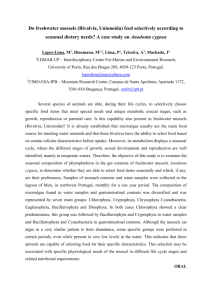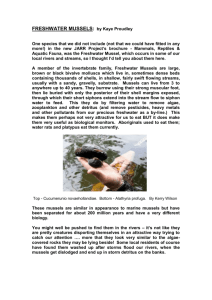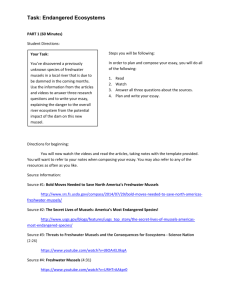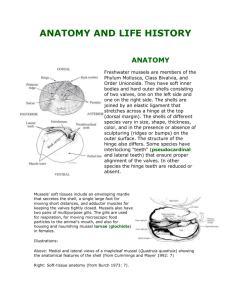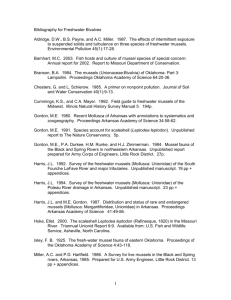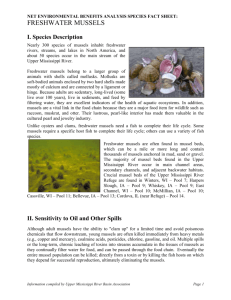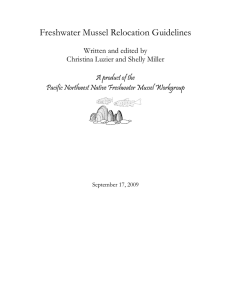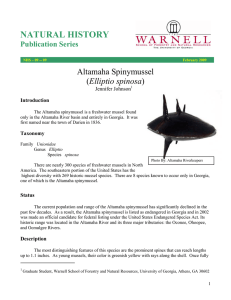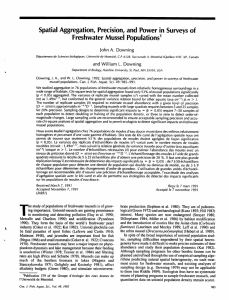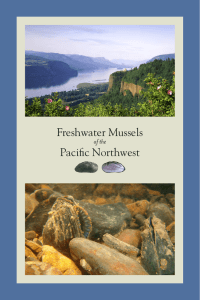Native Freshwater Unionids
advertisement
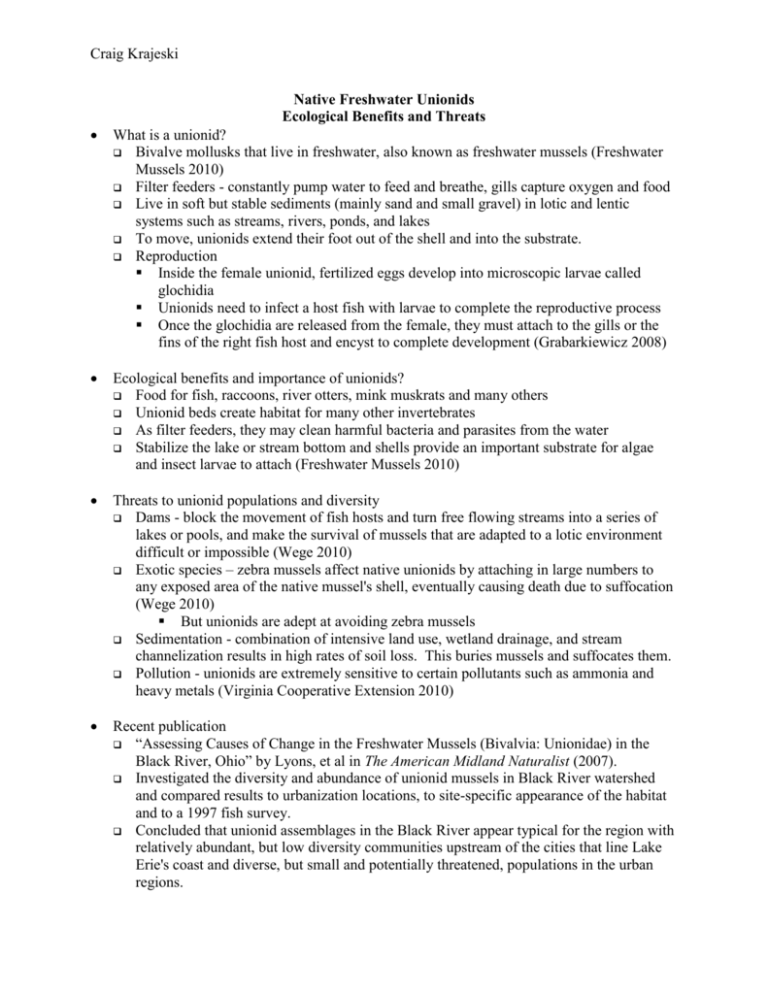
Craig Krajeski Native Freshwater Unionids Ecological Benefits and Threats What is a unionid? Bivalve mollusks that live in freshwater, also known as freshwater mussels (Freshwater Mussels 2010) Filter feeders - constantly pump water to feed and breathe, gills capture oxygen and food Live in soft but stable sediments (mainly sand and small gravel) in lotic and lentic systems such as streams, rivers, ponds, and lakes To move, unionids extend their foot out of the shell and into the substrate. Reproduction Inside the female unionid, fertilized eggs develop into microscopic larvae called glochidia Unionids need to infect a host fish with larvae to complete the reproductive process Once the glochidia are released from the female, they must attach to the gills or the fins of the right fish host and encyst to complete development (Grabarkiewicz 2008) Ecological benefits and importance of unionids? Food for fish, raccoons, river otters, mink muskrats and many others Unionid beds create habitat for many other invertebrates As filter feeders, they may clean harmful bacteria and parasites from the water Stabilize the lake or stream bottom and shells provide an important substrate for algae and insect larvae to attach (Freshwater Mussels 2010) Threats to unionid populations and diversity Dams - block the movement of fish hosts and turn free flowing streams into a series of lakes or pools, and make the survival of mussels that are adapted to a lotic environment difficult or impossible (Wege 2010) Exotic species – zebra mussels affect native unionids by attaching in large numbers to any exposed area of the native mussel's shell, eventually causing death due to suffocation (Wege 2010) But unionids are adept at avoiding zebra mussels Sedimentation - combination of intensive land use, wetland drainage, and stream channelization results in high rates of soil loss. This buries mussels and suffocates them. Pollution - unionids are extremely sensitive to certain pollutants such as ammonia and heavy metals (Virginia Cooperative Extension 2010) Recent publication “Assessing Causes of Change in the Freshwater Mussels (Bivalvia: Unionidae) in the Black River, Ohio” by Lyons, et al in The American Midland Naturalist (2007). Investigated the diversity and abundance of unionid mussels in Black River watershed and compared results to urbanization locations, to site-specific appearance of the habitat and to a 1997 fish survey. Concluded that unionid assemblages in the Black River appear typical for the region with relatively abundant, but low diversity communities upstream of the cities that line Lake Erie's coast and diverse, but small and potentially threatened, populations in the urban regions. Craig Krajeski Conclusion - Unionids are an integral component of aquatic ecosystems and their wealth of diversity in North America is unmatched anywhere else in the world. They are key bioindicators and are in desperate need of conservation. References Freshwater Mussels. Freshwater Mollusk Conservation Society. Retrieved November 7, 2010 from http://molluskconservation.org/MC_Ftpage.html. Grabarkiewicz, J.D., Davis, W.S. 2008. An Introduction to Freshwater Mussels as Biological Indicators. United States Environmental Protection Agency. Retrieved November 7, 2010 from http://www.epa.gov/bioiweb1/pdf/EPA-260-R-08015AnIntroductiontoFreshwaterMusselsasBioindicators.pdf. Hoggarth, M.A., Rice, D.L., Grove, T.L. 2000. The correlation of mussels with fish in the upper Blanchard River in Hardin and Hancock counties, Ohio, with special regard to the rayed bean (Villosafabalis). Ohio Biological Survey, 19-26. Lyons, M.S., Krebs, R.A., Holt, J.P., Rundo, L.J., Zawiski, W. 2007. Assessing Causes of Change in the Freshwater Mussels (Bivalvia: Unionidae) in the Black River, Ohio. The American Midland Naturalist, 158. 1-15. Virginia Cooperative Extension. Sustaining America's Aquatic Biodiversity - Freshwater Mussel Biodiversity and Conservation. Virginia Tech. Retrieved November 7, 2010 from http://pubs.ext.vt.edu/420/420-523/420-523.html. Wege, G. Freshwater Mussels of the Upper Mississippi River System. U.S. Fish & Wildlife Service. Retrieved November 7, 2010 from http://www.fws.gov/midwest/mussel/index.html.
